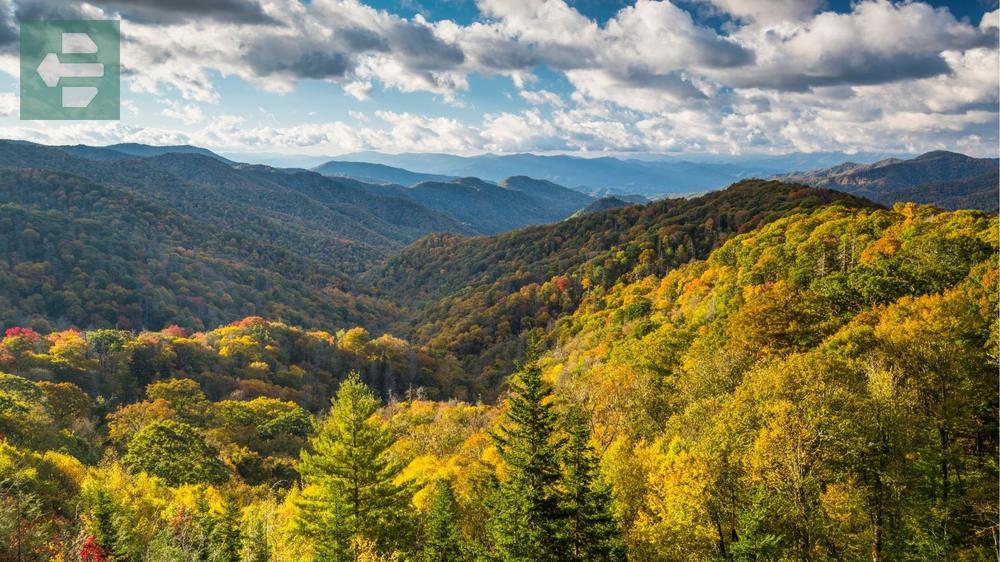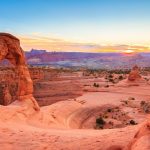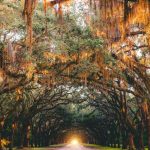America's wilderness offers extraordinary camping experiences across diverse landscapes, from glacier-carved mountains to pristine beaches. The best places to go camping in the US include Glacier National Park's Many Glacier, the Great Smoky Mountains' Elkmont, and Yosemite's Upper Pines. These destinations, along with hidden gems like Polihale State Park in Hawaii and Bridger-Teton National Forest in Wyoming, provide unique opportunities to connect with nature.
Keep reading as we uncover America's most spectacular camping destinations that will transform your outdoor adventures into lifelong memories.
List of Contents
- 1. Many Glacier Campground: Glacier's Crown Jewel
- 2. Elkmont Campground: Smoky Mountain Heritage
- 3. Upper Pines Campground: Yosemite Valley Floor
- 4. Moraine Park Campground: Rocky Mountain Gateway
- 5. Blackwoods Campground: Atlantic Coast Majesty
- 6. Hoh Campground: Olympic Rainforest Experience
- 7. Desert View Campground: Grand Canyon Solitude
- 8. The Needles Campground: Utah's Red Rock Wilderness
- 9. Polihale State Park: Hawaii's Remote Beach Camp
- 10. Bridger-Teton National Forest: Wyoming Wilderness
- 11. Assateague Island: Wild Horses and Beaches
- 12. Silver Bell Campground: Aspen Grove Sanctuary
- 13. Bartlett Cove Campground: Alaska's Glacier Bay Gateway
- 14. Haleakala National Park: Volcanic Crater Camping
- 15. Petit Jean State Park: Arkansas's Natural Crown
- Creating Your Camping Adventure
1. Many Glacier Campground: Glacier's Crown Jewel
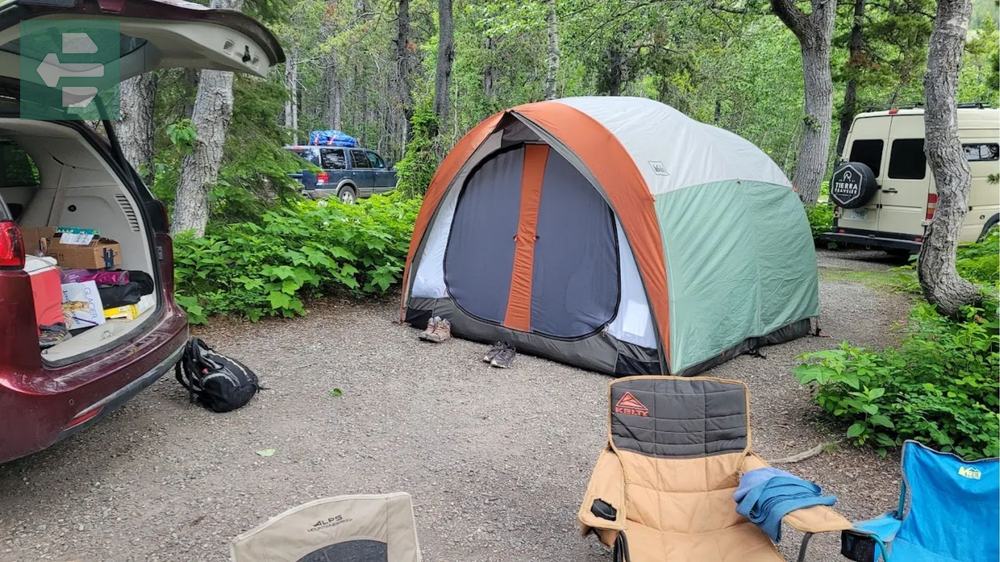
Many Glacier Campground sits in the heart of Glacier National Park, surrounded by towering peaks and pristine alpine lakes. This campground provides direct access to some of America's most dramatic mountain scenery, where glacial valleys stretch between jagged ridges.
The campground serves as base camp for legendary hiking trails like Grinnell Glacier and Iceberg Lake. Wildlife encounters happen regularly here—grizzly bears, mountain goats, and moose roam the surrounding meadows. At dawn, the silence breaks only with the sound of meltwater streams cascading down granite walls.
Quick Facts:
- Peak Season: July-September
- Access: Going-to-the-Sun Road (seasonal closures)
- Entry Fee: $35 per vehicle (7 days)
- Suggested Stay: 3-4 nights
- Key Areas: Swiftcurrent Lake, Lake Josephine, Mount Gould viewpoints
2. Elkmont Campground: Smoky Mountain Heritage
Elkmont Campground in Great Smoky Mountains National Park offers a gateway to America's most visited national park. The campground sits along the Little River, where the sound of flowing water provides a natural soundtrack for your stay.
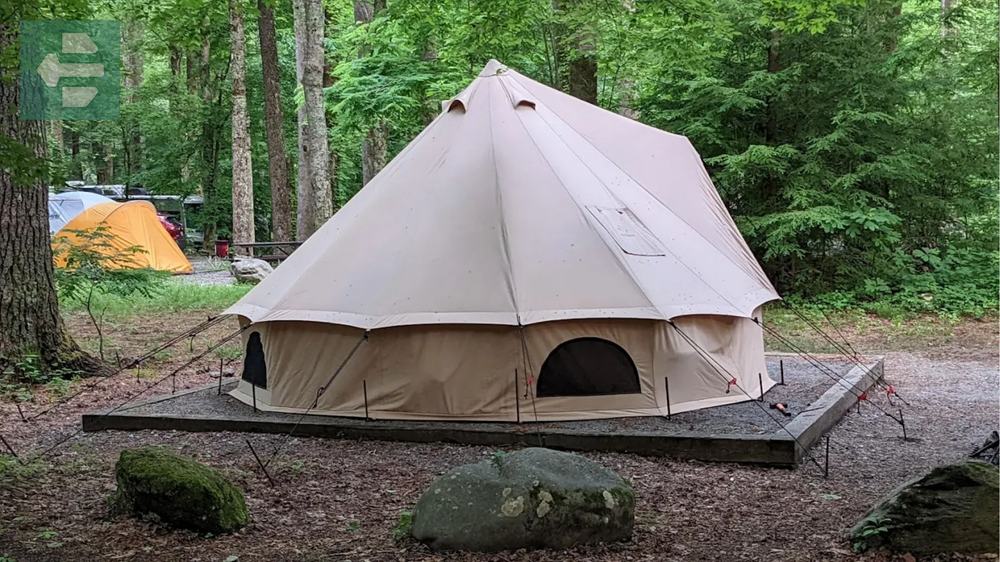
This location connects you to over 800 miles of hiking trails and serves as the park's premier firefly viewing area during late May and June. The historic Elkmont district nearby tells stories of early mountain communities through preserved cabins and structures.
Spring brings wildflower blooms that carpet the forest floor, while fall transforms the canopy into brilliant reds and golds.
Quick Facts:
- Peak Season: May-October
- Access: Gatlinburg entrance, 8 miles from visitor center
- Entry Fee: Free park entry
- Suggested Stay: 2-3 nights
- Key Areas: Cataract Falls, Elkmont Nature Trail, historic cabins
3. Upper Pines Campground: Yosemite Valley Floor
Upper Pines Campground places you on Yosemite Valley's floor, where granite monoliths rise thousands of feet above your tent. Half Dome and Glacier Point dominate the eastern horizon, creating one of America's most recognizable camping backdrops.
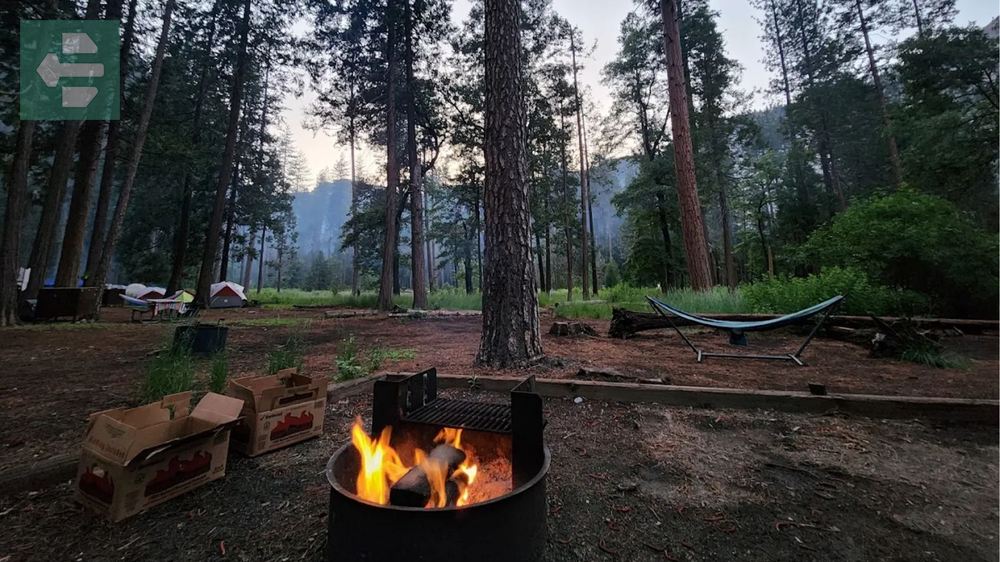
The Merced River flows nearby, offering cooling relief during summer heat. From this central location, world-famous trails like the Mist Trail to Vernal Falls begin just minutes from your campsite.
I remember waking here at 5:30 AM to see alpenglow paint Half Dome's granite face pink and gold—a moment that captures why Yosemite remains America's cathedral of stone.
Quick Facts:
- Peak Season: April-October
- Access: Yosemite Valley, CA-120
- Entry Fee: $35 per vehicle (7 days)
- Suggested Stay: 4-5 nights
- Key Areas: Happy Isles, Vernal Falls, Nevada Falls, Half Dome permits
4. Moraine Park Campground: Rocky Mountain Gateway
Moraine Park Campground sits in a glacially carved meadow within Rocky Mountain National Park, surrounded by peaks reaching above 13,000 feet. Elk graze in the meadows at dawn and dusk, while the Continental Divide forms a dramatic western backdrop.
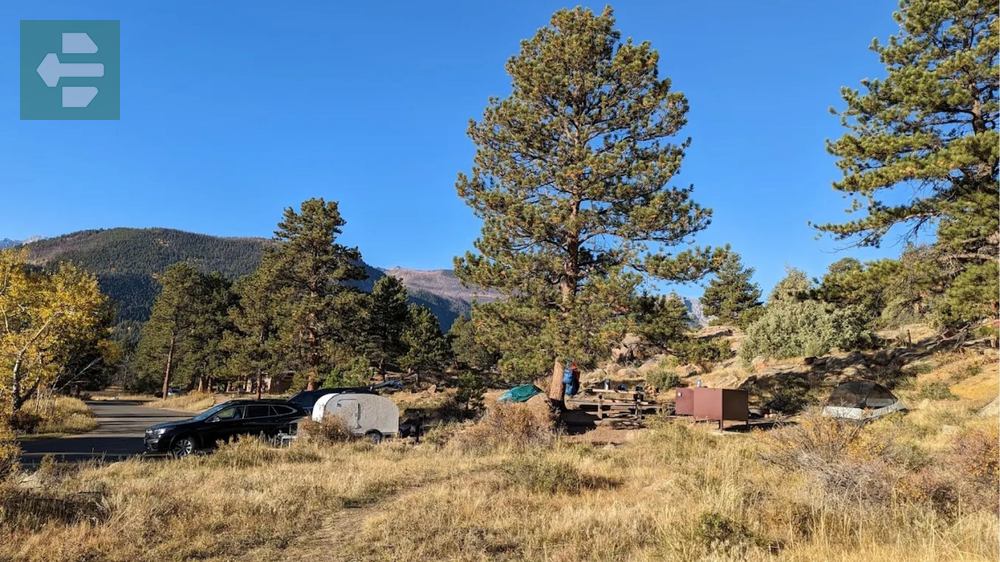
The campground provides access to Bear Lake Road and Trail Ridge Road, the highest continuous paved road in America. Alpine lakes scattered throughout the backcountry reward hikers willing to gain elevation.
Late summer brings wildflower displays that transform mountain meadows into natural gardens of color and fragrance.
Quick Facts:
- Peak Season: May-October
- Access: Beaver Meadows entrance, 1.5 miles
- Entry Fee: $30 per vehicle (7 days)
- Suggested Stay: 3-4 nights
- Key Areas: Bear Lake, Sprague Lake, Alberta Falls, Deer Mountain
5. Blackwoods Campground: Atlantic Coast Majesty
Blackwoods Campground in Acadia National Park offers coastal camping where pine forests meet rocky Atlantic shores. The campground sits two miles from the ocean, providing easy access to Acadia's rugged coastline and granite peaks.
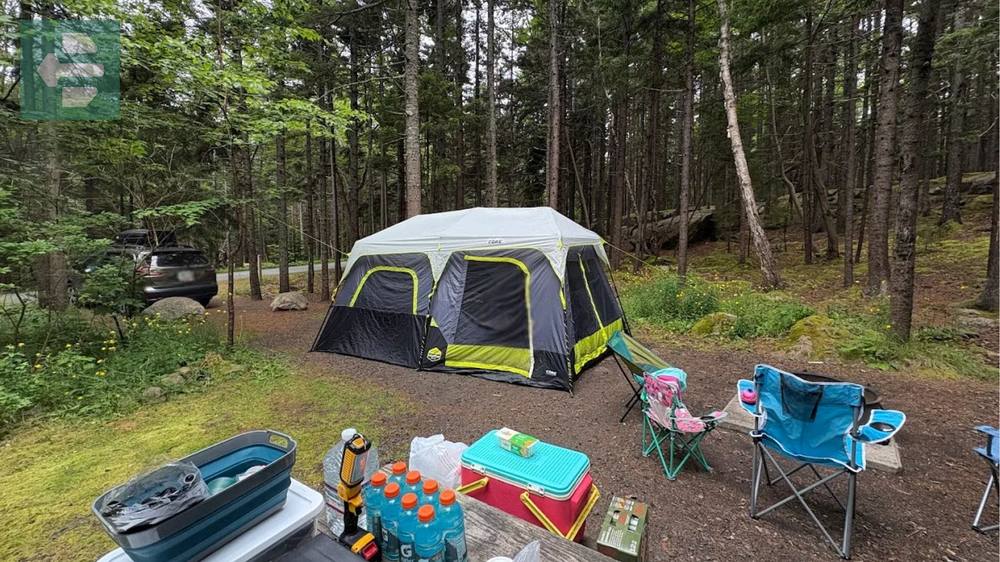
Cadillac Mountain, the first place to see sunrise in America from October to March, rises directly from your camping area. The park's carriage roads, built by John D. Rockefeller Jr., create a network perfect for hiking and cycling.
Ocean fog often rolls through the campground at dawn, creating mystical conditions that transform familiar landscapes into something otherworldly.
Quick Facts:
- Peak Season: May-October
- Access: Route 3, Bar Harbor area
- Entry Fee: $30 per vehicle (7 days)
- Suggested Stay: 3-4 nights
- Key Areas: Cadillac Mountain, Jordan Pond, Thunder Hole, Sand Beach
6. Hoh Campground: Olympic Rainforest Experience
Hoh Campground sits within Olympic National Park's temperate rainforest, where moss-draped trees create cathedral-like spaces. The Hoh River flows nearby, carrying glacial sediment that gives the water its distinctive gray-green color.
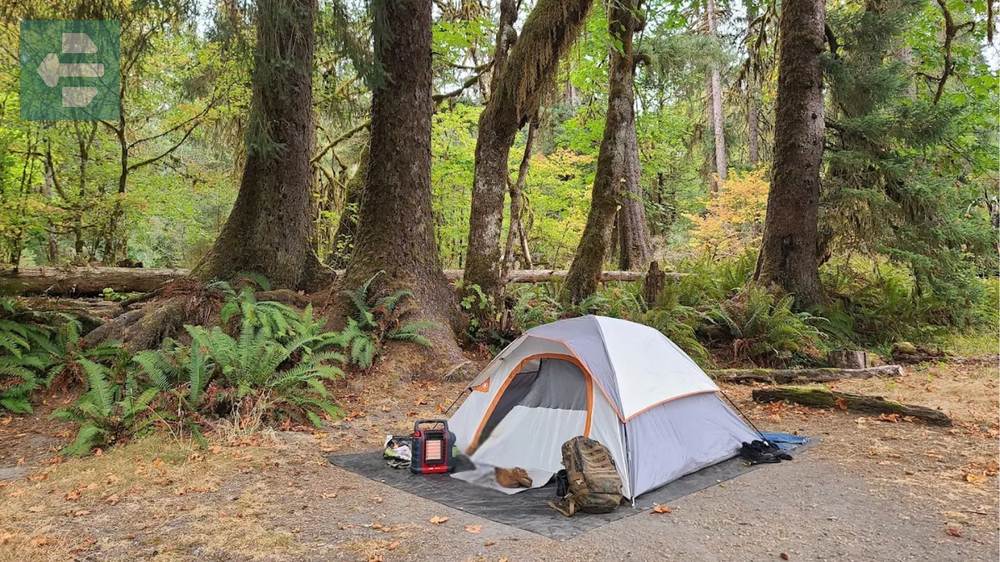
Roosevelt elk move through the campground regularly, grazing in open areas between towering Sitka spruce and western hemlock. The forest here receives over 140 inches of rain annually, creating an ecosystem unlike anywhere else in the continental United States.
Trail access from the campground leads to Blue Glacier on Mount Olympus, though most visitors find plenty to explore in the enchanted forest nearby.
Quick Facts:
- Peak Season: July-September
- Access: US-101 to Upper Hoh Road, 18 miles
- Entry Fee: $30 per vehicle (7 days)
- Suggested Stay: 2-3 nights
- Key Areas: Hoh River Trail, Hall of Mosses, Spruce Nature Trail, Blue Glacier route
7. Desert View Campground: Grand Canyon Solitude
Desert View Campground offers Grand Canyon camping away from the crowded South Rim village area. The campground sits near Desert View Watchtower, providing spectacular canyon overlooks without the masses.
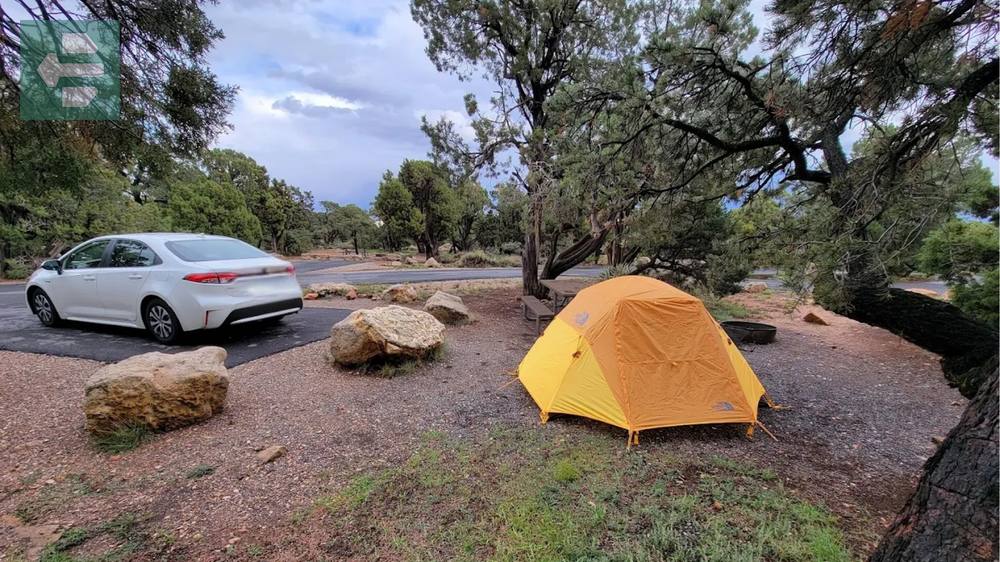
This location offers darker skies for stargazing and easier access to lesser-known viewpoints along Desert View Drive. The Colorado River appears as a thin ribbon nearly a mile below, while the canyon's geological layers tell Earth's ancient story in stone.
Sunrise here reveals the canyon's true scale as shadows retreat and colors shift from purple to gold across the layered rock formations.
Quick Facts:
- Peak Season: May-September
- Access: Desert View Drive, 25 miles from Grand Canyon Village
- Entry Fee: $35 per vehicle (7 days)
- Suggested Stay: 2-3 nights
- Key Areas: Desert View Watchtower, Lipan Point, Tusayan Museum, Grandview Point
8. The Needles Campground: Utah's Red Rock Wilderness
The Needles Campground in Canyonlands National Park sits among towering sandstone spires that give this district its name. Red and orange rock formations create natural sculptures that change color throughout the day as light shifts across the landscape.

The campground provides access to world-class hiking through slot canyons, natural arches, and ancient Ancestral Puebloan ruins. Chess pieces of stone rise from the desert floor, creating a geological wonderland unlike anywhere else on Earth.
Night skies here rank among America's darkest, making this an exceptional destination for astronomy enthusiasts and anyone seeking to reconnect with celestial rhythms.
Quick Facts:
- Peak Season: March-May, September-November
- Access: UT-211, 40 miles from US-191
- Entry Fee: $30 per vehicle (7 days)
- Suggested Stay: 3-4 nights
- Key Areas: Mesa Arch, Delicate Arch viewpoint, Fiery Furnace, Cave Spring Trail
9. Polihale State Park: Hawaii's Remote Beach Camp
Polihale State Park offers camping on Kauai's western shore, where 15 miles of pristine beach meet the Pacific Ocean. This remote location sits at the end of a rough dirt road, ensuring crowds remain minimal even during peak seasons.

The beach faces west, providing spectacular sunsets that paint the sky in brilliant oranges and purples. Na Pali Coast's dramatic cliffs begin here, creating a backdrop of fluted ridges and hidden valleys accessible only by boat or challenging hiking trails.
Trade winds provide natural cooling, while the sound of waves creates a constant, soothing presence that helps you disconnect from modern life completely.
Quick Facts:
- Peak Season: Year-round (avoid rainy season: November-March)
- Access: End of Highway 50, 5 miles on dirt road
- Entry Fee: Hawaii state resident: $18, Non-resident: $30 per night
- Suggested Stay: 2-3 nights
- Key Areas: Queen's Pond, Barking Sands Beach, Na Pali Coast trailhead, Waimea Canyon nearby
10. Bridger-Teton National Forest: Wyoming Wilderness
Bridger-Teton National Forest encompasses over 3.4 million acres of diverse wilderness, offering countless dispersed camping opportunities. The forest stretches from Yellowstone's southern boundary to the Wind River Range, providing access to some of America's most pristine backcountry.
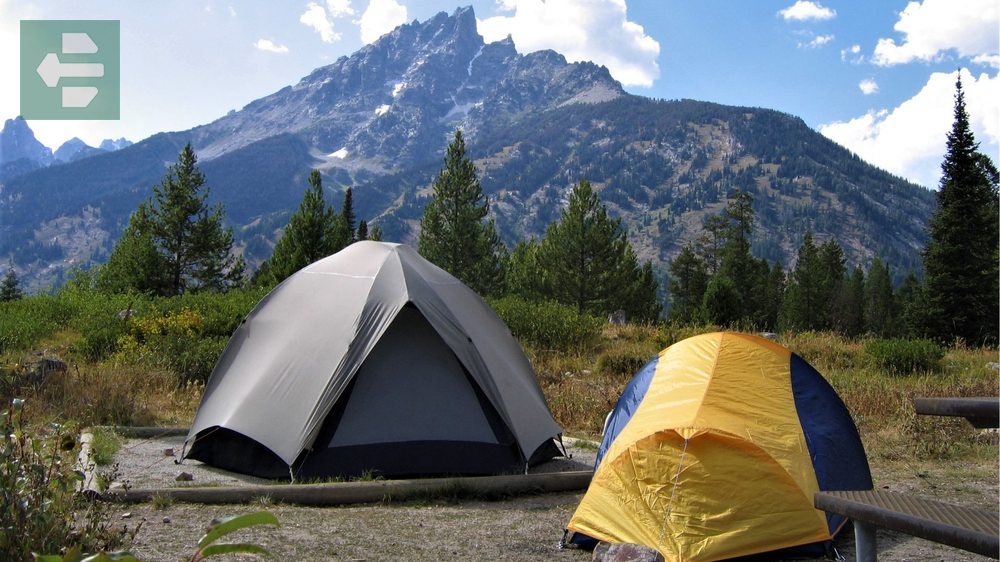
Alpine lakes reflect jagged peaks, while vast meadows support elk, moose, and occasional grizzly bears. The Continental Divide winds through this territory, where waters flow either toward the Pacific or Atlantic oceans.
Local guides recommend arriving with high-clearance vehicles and detailed maps, as many of the best camping spots require navigation on unmarked forest roads.
Quick Facts:
- Peak Season: June-September
- Access: Multiple access points from I-80, US-26, US-89
- Entry Fee: Free dispersed camping
- Suggested Stay: 4-7 nights
- Key Areas: Wind River Range, Gros Ventre Wilderness, Teton Wilderness, Green River Lakes
11. Assateague Island: Wild Horses and Beaches
Assateague Island National Seashore spans Maryland and Virginia, offering beachside camping where wild horses roam freely. The barrier island stretches 37 miles along the Atlantic Coast, providing pristine beaches away from developed resort areas.
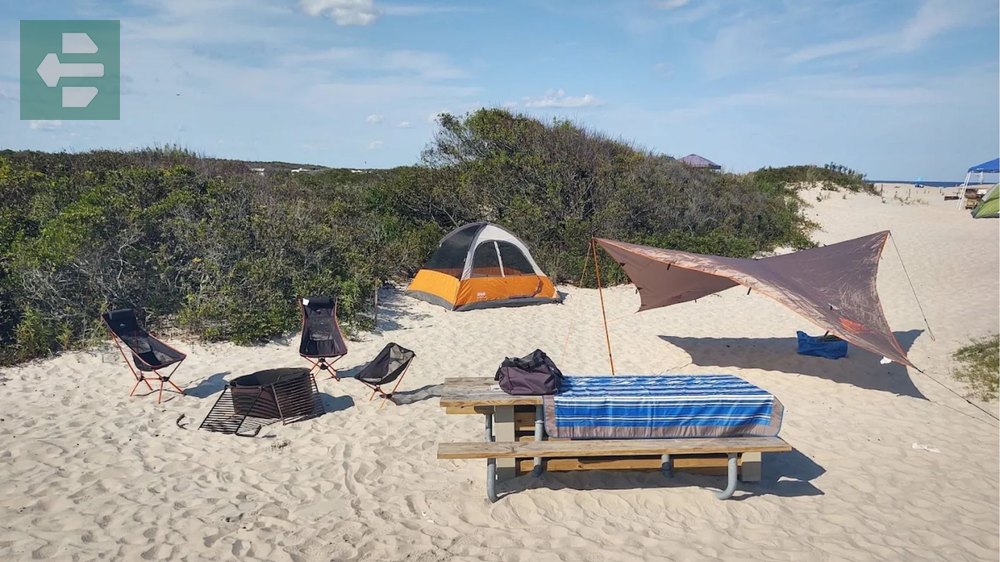
Wild ponies, descendants of colonial livestock, graze in salt marshes and wander across dunes. The island's ecosystem supports over 320 bird species, making this a premier destination for wildlife photography and birdwatching.
Ocean and bayside sites offer different experiences—choose oceanside for surf sounds and sunrise views, or bayside for protected waters and stunning sunsets.
Quick Facts:
- Peak Season: May-September
- Access: MD Route 611 (Oceanside) or VA Route 175 (Bayside)
- Entry Fee: $25 per vehicle (7 days)
- Suggested Stay: 3-4 nights
- Key Areas: Ocean beaches, Bayside beaches, Life of the Marsh Trail, wild horse viewing areas
12. Silver Bell Campground: Aspen Grove Sanctuary
Silver Bell Campground sits outside Aspen, Colorado, providing 14 intimate sites surrounded by aspen groves and subalpine forests. Maroon Creek flows nearby, while the iconic Maroon Bells peaks create one of Colorado's most photographed backdrops.
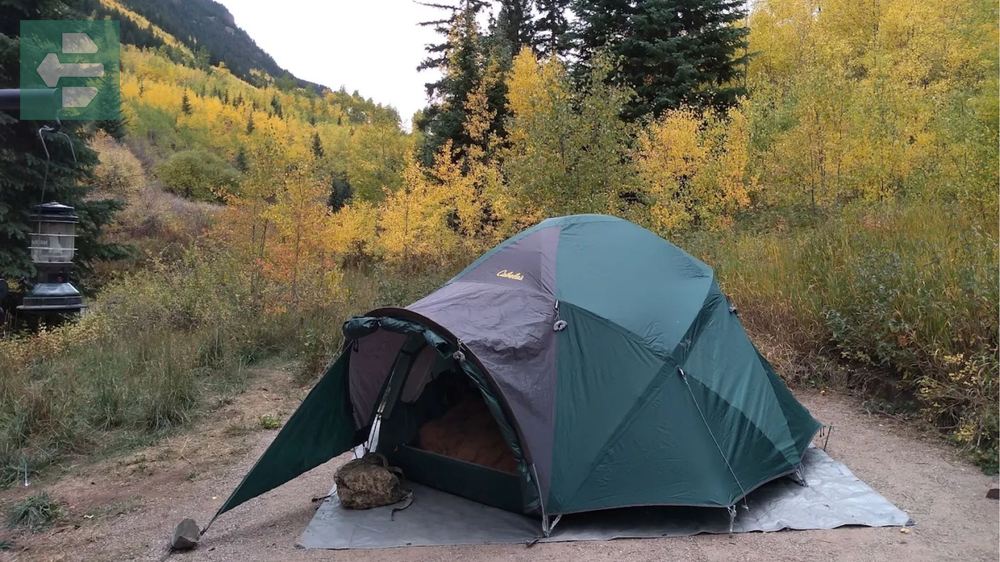
Late September transforms surrounding aspens into golden cathedrals that shimmer in mountain breezes. The campground's small size ensures a peaceful experience, though reservations become essential during fall color season.
Bighorn sheep occasionally venture down from high peaks, and pika calls echo from nearby talus slopes throughout summer months.
Quick Facts:
- Peak Season: June-September (peak colors late September)
- Access: Maroon Creek Road, 9 miles from Aspen
- Entry Fee: $35 per night (White River National Forest)
- Suggested Stay: 2-3 nights
- Key Areas: Maroon Bells, Crater Lake, Maroon Lake, Aspen downtown (shuttle access)
13. Bartlett Cove Campground: Alaska's Glacier Bay Gateway
Bartlett Cove Campground provides the only camping access to Glacier Bay National Park, where tidewater glaciers meet the sea. The campground sits in temperate rainforest, surrounded by towering spruce and hemlock trees draped with moss.
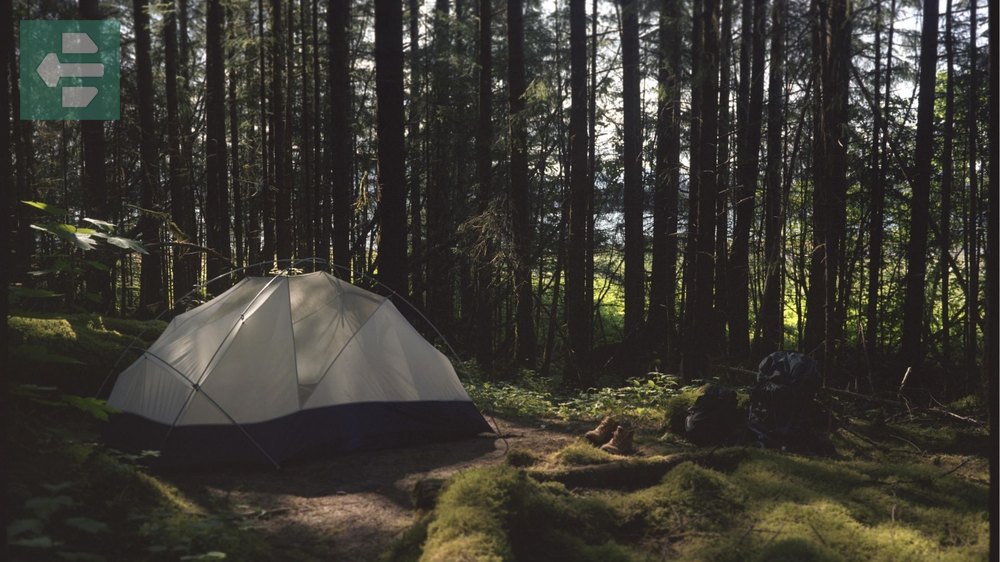
Humpback whales feed in Icy Strait visible from the campground, while brown bears and Sitka black-tailed deer move through surrounding forests. The bay itself stretches 65 miles inland, showcasing active glaciers, fjords, and the dramatic process of glacial retreat.
Flight-seeing tours and boat excursions depart from nearby Gustavus, providing access to calving glaciers and remote wildlife viewing opportunities.
Quick Facts:
- Peak Season: May-September
- Access: Gustavus (by air or ferry from Juneau)
- Entry Fee: Free camping, park entry varies by tour
- Suggested Stay: 4-5 nights
- Key Areas: Glacier Bay boat tours, Point Gustavus, Bartlett River Trail, whale watching areas
14. Haleakala National Park: Volcanic Crater Camping
Haleakala National Park on Maui offers unique camping within a massive volcanic crater that measures seven miles across. The landscape resembles Mars more than typical Hawaiian imagery, with red cinder cones, rare silversword plants, and endless views across the crater floor.
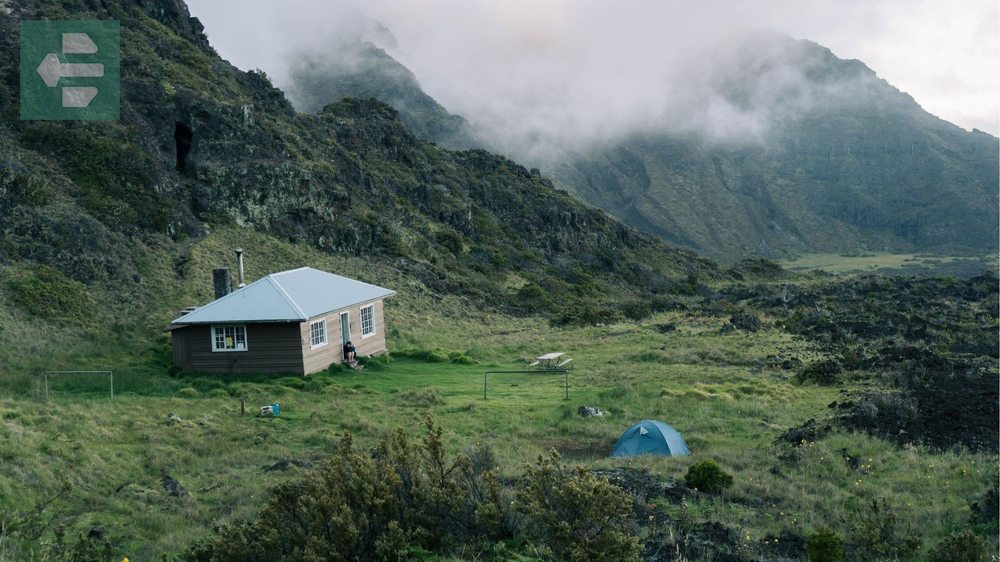
Hosmer Grove Campground sits at 6,800 feet elevation, providing cooler temperatures and access to native bird species found nowhere else on Earth. The summit reaches 10,023 feet, where visitors witness what Mark Twain called “the sublimest spectacle” during sunrise.
Wilderness camping permits allow backpackers to stay in remote crater cabins, placing you completely within this otherworldly volcanic environment.
Quick Facts:
- Peak Season: April-October (avoid winter storms)
- Access: Haleakala Highway (Route 378) to summit area
- Entry Fee: $30 per vehicle (3 days)
- Suggested Stay: 2-3 nights
- Key Areas: Haleakala Crater, Sliding Sands Trail, Hosmer Grove, summit sunrise viewing
15. Petit Jean State Park: Arkansas's Natural Crown
Petit Jean State Park, Arkansas's first state park, sits atop a mountain plateau overlooking the Arkansas River Valley. The park combines rugged bluffs, waterfalls, and hardwood forests that showcase the Ozark Mountains' natural beauty.
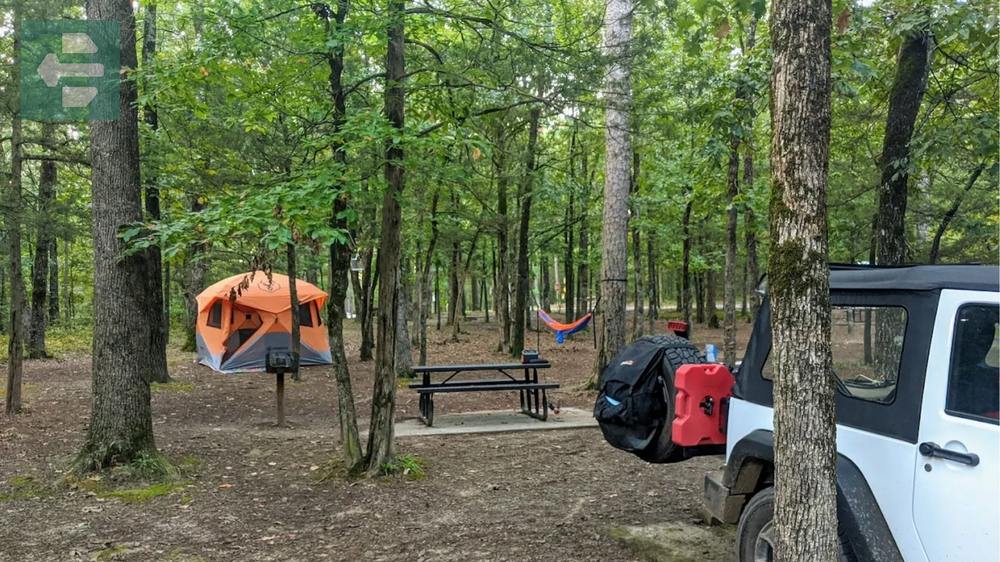
Cedar Falls, a 95-foot waterfall, provides the park's signature attraction, while extensive hiking trails connect rock formations, overlooks, and historical sites. The CCC-built facilities from the 1930s add historical character to this natural setting.
Rock climbing opportunities abound on the park's sandstone bluffs, and the mountain location provides relief from Arkansas's summer heat through elevated breezes and shade.
Quick Facts:
- Peak Season: April-October
- Access: Highway 154, between Russellville and Morrilton
- Entry Fee: Arkansas residents: $8, Non-residents: $10 per night
- Suggested Stay: 2-3 nights
- Key Areas: Cedar Falls, Rock House Cave, Bear Cave, Mather Lodge historic area
Creating Your Camping Adventure
America's best camping destinations offer more than just places to sleep outdoors. They provide doorways to experiences that reshape how we see the natural world and our place within it.
Each location on this list represents years of geological formation, ecological development, and cultural significance. From Glacier's ice-carved valleys to Hawaii's volcanic landscapes, these places invite us to slow down and observe the intricate processes that created the continent we call home.
Pack your gear with intention. Bring layers for mountain weather changes. Carry plenty of water for desert camps. Research local wildlife patterns and seasonal considerations before you arrive. The best camping experiences happen when preparation meets opportunity in spectacular settings.
